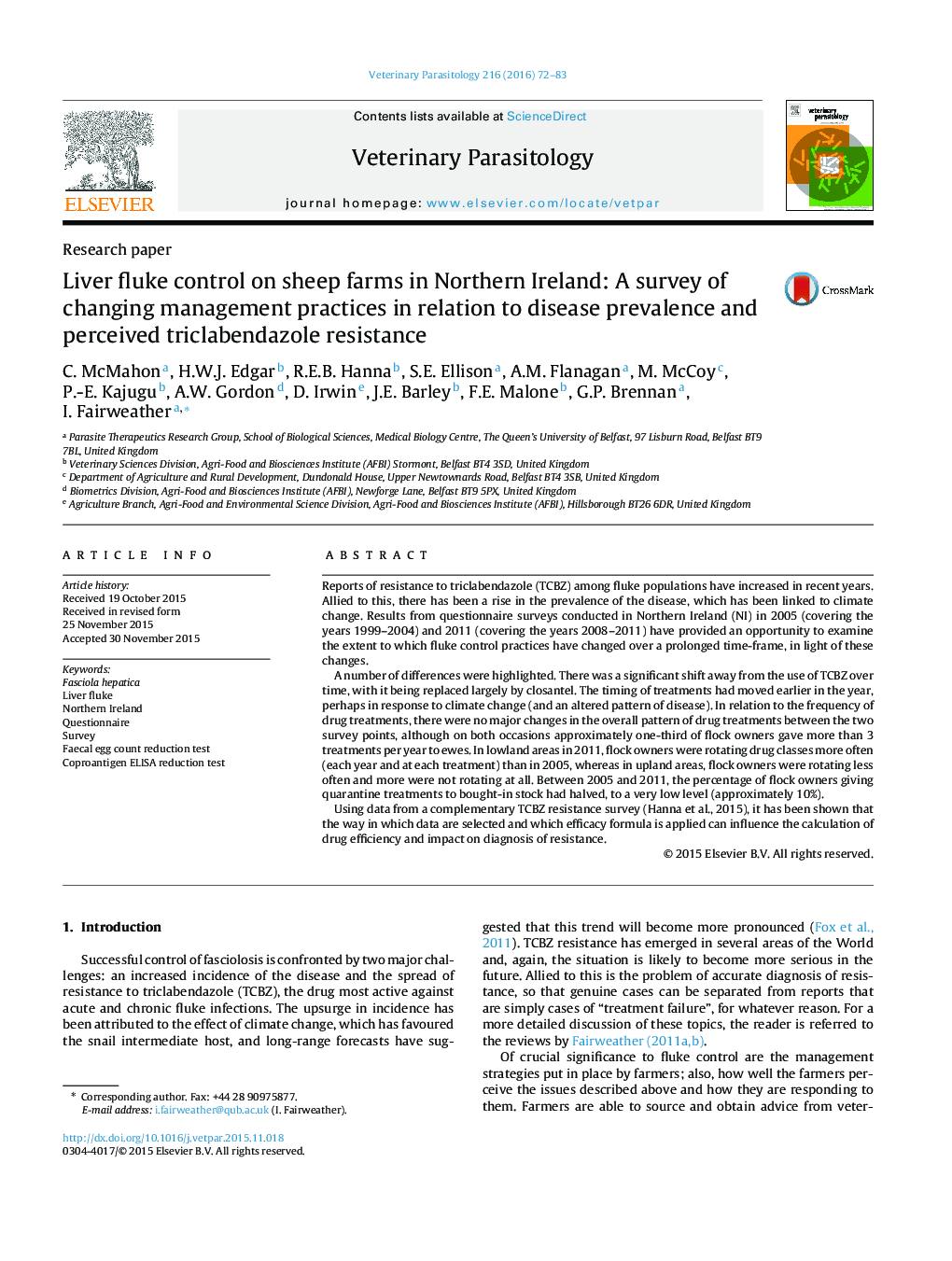| کد مقاله | کد نشریه | سال انتشار | مقاله انگلیسی | نسخه تمام متن |
|---|---|---|---|---|
| 2469960 | 1555660 | 2016 | 12 صفحه PDF | دانلود رایگان |
• Surveys on liver fluke control in sheep were conducted in N. Ireland in 2005 and 2011.
• There was a progressive shift away from use of TCBZ; it was replaced largely by closantel.
• Lowland sheep owners rotated drugs more often in 2011 than 2005.
• The timing of treatments moved towards the start of the year.
• At both time-points, almost one-third of farmers gave 3 or more treatments per year to ewes.
• Few flock owners gave quarantine treatments in 2005. The percentage dropped further in 2011, from 31.0% to 15.2% and 25.9% to 13.9% for lowland and upland flock owners, respectively.
Reports of resistance to triclabendazole (TCBZ) among fluke populations have increased in recent years. Allied to this, there has been a rise in the prevalence of the disease, which has been linked to climate change. Results from questionnaire surveys conducted in Northern Ireland (NI) in 2005 (covering the years 1999–2004) and 2011 (covering the years 2008–2011) have provided an opportunity to examine the extent to which fluke control practices have changed over a prolonged time-frame, in light of these changes.A number of differences were highlighted. There was a significant shift away from the use of TCBZ over time, with it being replaced largely by closantel. The timing of treatments had moved earlier in the year, perhaps in response to climate change (and an altered pattern of disease). In relation to the frequency of drug treatments, there were no major changes in the overall pattern of drug treatments between the two survey points, although on both occasions approximately one-third of flock owners gave more than 3 treatments per year to ewes. In lowland areas in 2011, flock owners were rotating drug classes more often (each year and at each treatment) than in 2005, whereas in upland areas, flock owners were rotating less often and more were not rotating at all. Between 2005 and 2011, the percentage of flock owners giving quarantine treatments to bought-in stock had halved, to a very low level (approximately 10%).Using data from a complementary TCBZ resistance survey (Hanna et al., 2015), it has been shown that the way in which data are selected and which efficacy formula is applied can influence the calculation of drug efficiency and impact on diagnosis of resistance.
Figure optionsDownload as PowerPoint slide
Journal: Veterinary Parasitology - Volume 216, 30 January 2016, Pages 72–83
